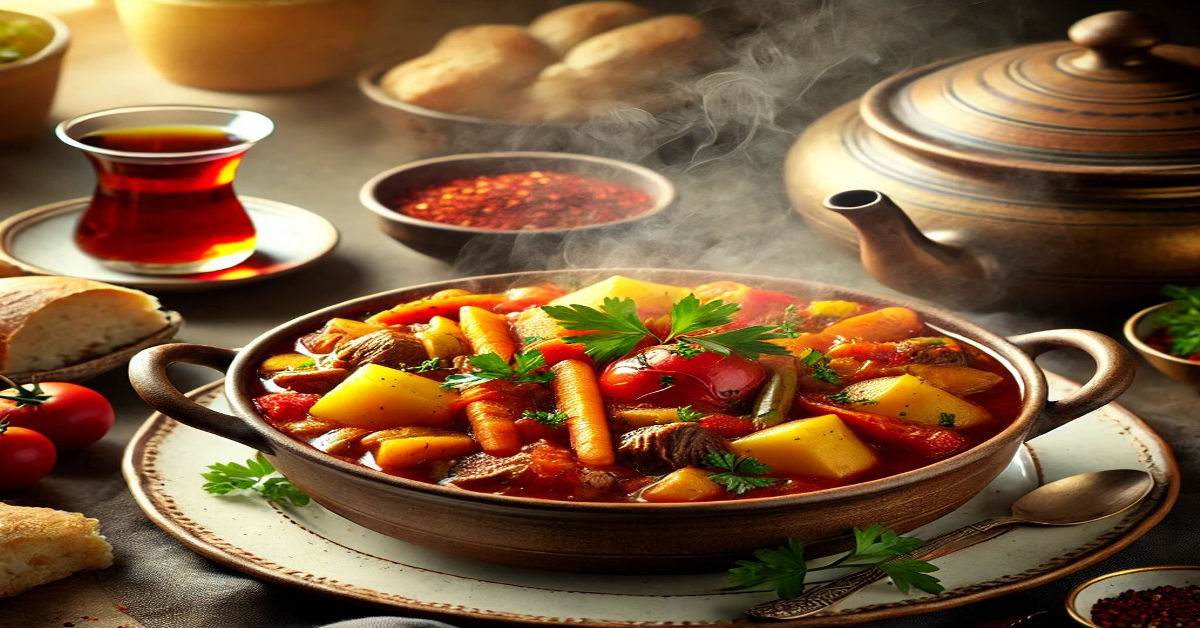Food & Drinks
Java Coffee from Indonesia: A Rich Brew of History and Flavor

Indonesia, often associated with its vibrant culture and breathtaking landscapes, is also a global powerhouse in coffee production. As one of the world’s largest coffee exporters, Indonesia has carved its unique niche in the coffee industry. From the lush plantations of Sumatra to the volcanic soil of Java, the country offers an array of rich and distinctive coffee flavors. If you’re a coffee enthusiast or just starting your journey, discovering Java coffee from Indonesia promises an unforgettable experience. Let’s dive into the fascinating world of Indonesian coffee and uncover its secrets.
The Legacy of Java Coffee: Where It All Began
The term “Java coffee” is not just a catchy phrase; it holds historical significance. Java was one of the first places outside Ethiopia and Arabia where coffee was cultivated on a large scale. Introduced by the Dutch during the 17th century, coffee plantations thrived on the fertile volcanic soils of Java. Over time, the term “Java” became synonymous with coffee itself, symbolizing its importance in global coffee culture.
Today, Java coffee is celebrated for its smooth, well-balanced flavor with a hint of earthiness and a mild body. It’s a testament to the island’s rich coffee-growing heritage.
The Diverse Landscape of Indonesian Coffee
Indonesia’s archipelago is home to a diverse range of climates and soil types, making it a coffee lover’s paradise. Each region brings its own unique character to the beans, influenced by local conditions and traditions. Coffee from Indonesia is typically grown in high-altitude areas, benefiting from cooler temperatures and rich volcanic soil. Let’s explore the key varieties grown here.
The Three Main Coffee Varieties in Indonesia
Indonesia predominantly produces three types of coffee beans: Arabica, Robusta, and Liberica. Each type has its unique traits, making them appealing to different palates.
- Arabica: This premium coffee variety thrives in Indonesia’s high-altitude regions, such as Sumatra, Sulawesi, and Bali. It’s known for its bright acidity, floral aroma, and nuanced flavors ranging from fruity to chocolaty. Arabica beans are often preferred by specialty coffee enthusiasts.
- Robusta: Grown in lower-altitude areas, Robusta is more robust in flavor and higher in caffeine content. It has a bold, earthy taste with hints of bitterness, making it popular in espresso blends and instant coffee production.
- Liberica: A rare find in the coffee world, Liberica is cultivated in select parts of Indonesia. Known for its large beans and smoky, woody aroma, Liberica is an exotic choice for those seeking a unique coffee experience.
What Makes Java Coffee Unique?
Java coffee stands out not just for its history but also for its distinct characteristics. Grown on volcanic slopes, the beans benefit from nutrient-rich soil and an ideal climate. The result is a coffee that is smooth and full-bodied, with low acidity and subtle notes of chocolate, nuts, and spice.
Traditional processing methods, such as wet-hulling (locally known as “giling basah”), further enhance the beans’ unique profile. This method gives Java coffee its signature earthy and herbal tones, setting it apart from other coffee varieties worldwide.
Regions That Define Indonesian Coffee
Indonesia’s coffee-growing regions each bring something special to the table. Here are some of the most renowned areas:
- Sumatra: Known for its earthy, full-bodied coffee with low acidity, Sumatra produces some of the most sought-after beans, including Mandheling and Gayo varieties.
- Java: Famous for its balanced flavor and smooth texture, Java coffee is a favorite among those who enjoy mild yet complex brews.
- Sulawesi: Coffee from Sulawesi, particularly the Toraja variety, is celebrated for its deep, rich flavor with hints of spice and fruit.
- Bali: Bali’s Kintamani coffee is cultivated in the island’s highlands, where beans are infused with a bright, citrusy flavor.
- Papua: Lesser-known but equally delightful, Papua’s coffee offers a clean and vibrant profile with notes of tropical fruits and florals.
The Impact of Volcanic Soil on Coffee Flavor
One of the key reasons for Indonesia’s exceptional coffee quality is its volcanic soil. Rich in minerals and nutrients, this soil type provides an ideal environment for coffee plants to thrive. The slow ripening process, coupled with the high altitude, allows the beans to develop complex flavors. This is why coffee from volcanic regions like Java and Sumatra often has a rich, full-bodied taste with unique earthy undertones.
The Traditional Coffee Culture of Indonesia
Coffee is deeply ingrained in Indonesian culture. From bustling markets to quiet villages, you’ll find coffee being brewed and enjoyed in countless ways. A popular tradition is drinking kopi tubruk, a simple yet aromatic coffee made by boiling coarse coffee grounds with sugar. It’s a staple in many households and a symbol of hospitality.
In urban areas, modern coffee shops coexist with traditional warungs, offering a blend of old and new coffee experiences. Whether you prefer sipping a latte or a strong cup of kopi luwak, Indonesia caters to every taste.
The Famous Kopi Luwak: A Rare Indonesian Specialty
No discussion of Indonesian coffee is complete without mentioning kopi luwak, one of the most exotic and expensive coffees in the world. Produced using beans that have been eaten and excreted by civets, this coffee undergoes a unique fermentation process in the animal’s digestive system. The result is a smooth, less acidic brew with a distinct flavor.
While kopi luwak has gained global fame, ethical concerns about the treatment of civets have led to a rise in demand for responsibly sourced, wild-harvested kopi luwak. If you’re adventurous, trying a cup of this rare coffee can be a unique experience.
Challenges Facing Indonesian Coffee Farmers
Despite its global success, Indonesian coffee farming faces several challenges. Climate change, fluctuating market prices, and pests can significantly impact production. Many farmers still rely on traditional methods, which, while preserving the authenticity of the coffee, may limit scalability and efficiency.
Efforts are underway to support sustainable practices and empower smallholder farmers. Initiatives such as fair trade certifications and direct trade partnerships aim to improve the livelihoods of coffee-growing communities while ensuring high-quality beans.
How to Brew the Perfect Cup of Java Coffee
To fully appreciate Java coffee, proper brewing techniques are essential. Here are a few tips:
- Use Freshly Ground Beans: Grind your beans just before brewing to preserve their aroma and flavor.
- Choose the Right Method: For Java coffee, methods like French press or pour-over work best to highlight its smooth and earthy profile.
- Measure Correctly: Use the right coffee-to-water ratio for a balanced cup. A general rule is 1–2 tablespoons of coffee per 6 ounces of water.
- Experiment with Temperature: Water temperature plays a crucial role. Aim for 195–205°F (90–96°C) for optimal extraction.
By paying attention to these details, you can savor the authentic taste of Java coffee right in your home.
Supporting Sustainability in Indonesian Coffee
As coffee lovers, we play a role in supporting sustainable practices. Choosing coffee with fair trade or organic certifications ensures that farmers are compensated fairly and that environmentally friendly practices are followed. Many Indonesian coffee producers are embracing agroforestry and organic farming to protect the environment while producing high-quality beans.
Why Java Coffee from Indonesia Deserves a Place in Your Cup
Java coffee from Indonesia ’s coffee industry is a blend of tradition, innovation, and exceptional quality. Java coffee, in particular, is more than just a drink—it’s a journey through history, culture, and craftsmanship. Whether you’re drawn to its smooth flavor, intrigued by its origins, or simply seeking a new coffee adventure, Java coffee promises to deliver a satisfying experience.
As you explore the world of Indonesian coffee, remember that every cup tells a story. From the hands of skilled farmers to your favorite mug, Java coffee from Indonesia connects people across cultures and continents. So brew yourself a cup, sit back, and savor the taste of Indonesia’s rich coffee heritage.
Food & Drinks
Süberlig: A Heartwarming Turkish Comfort Dish

When it comes to comfort food, each culture has its own special dishes that evoke a sense of home and tradition. In Turkey, one dish that stands out for its hearty flavors and rich history is süberlig. This delicious and satisfying meal has been passed down through generations and is known for its versatility. Whether you’re seeking a warm family dinner or a comforting meal after a long day, süberlig is the perfect choice. But what exactly makes this dish so beloved by Turkish families? Let’s take a deep dive into what süberlig is, its history, ingredients, and how it’s prepared.
What is Süberlig?
Süberlig is a traditional Turkish dish that combines a variety of fresh vegetables, tender meats, and aromatic spices, all cooked together to create a flavorful, hearty stew. It’s the kind of dish that’s perfect for family gatherings, where everyone can enjoy the flavors of a comforting, home-cooked meal. The beauty of süberlig lies in its flexibility. Depending on the region, the available ingredients, and personal preferences, the dish can be modified, but the essence of the dish remains the same – a rich, savory blend of flavors simmered to perfection.
Often considered a classic Turkish comfort food, süberlig is typically made in large quantities, making it ideal for serving a group of people. It’s often associated with colder months, providing a warm and filling meal that nourishes both body and soul. Whether served with crusty bread or as a standalone dish, süberlig has earned its place as a beloved meal across Turkey.
The Origins and Tradition Behind Süberlig
The origins of süberlig, like many traditional Turkish dishes, are somewhat unclear. Turkish cuisine has always been shaped by centuries of influence from various cultures, including the Ottoman Empire, Central Asia, the Middle East, and the Mediterranean region. While it’s difficult to pinpoint exactly when süberlig first appeared, it is clear that this dish has been a staple in Turkish homes for generations.
Süberlig is often associated with rural Turkish households, where the preparation of hearty, long-cooked stews was common. The dish’s simplicity and reliance on local, seasonal ingredients made it an ideal meal for families living in villages or small towns, where food had to be both filling and affordable. Over time, süberlig spread to different regions of Turkey and became a favorite among families in both urban and rural areas alike.
Essential Ingredients in Süberlig
One of the defining features of süberlig is its use of fresh, locally sourced ingredients. The dish can vary slightly depending on the region, but it generally includes a combination of vegetables, meats, and spices. Here are some of the most common ingredients used in preparing this flavorful dish:
- Meat: The meat used in süberlig can vary, but lamb and beef are the most common choices. These meats are usually cut into small pieces and simmered to tenderness. The slow cooking process ensures the meat absorbs all the delicious flavors of the other ingredients.
- Vegetables: Potatoes, carrots, onions, and tomatoes are staples in süberlig. These vegetables add both texture and sweetness to the dish. The addition of bell peppers and eggplant in some variations further enhances the flavor profile.
- Spices and Herbs: Turkish cuisine is renowned for its bold use of spices, and süberlig is no exception. Common spices used in this dish include cumin, paprika, black pepper, and a pinch of red pepper flakes for heat. Fresh parsley and dill are often added at the end to give the dish a fresh, aromatic finish.
- Broth or Stock: The base of süberlig is typically a rich, flavorful broth made from the meat, vegetables, and spices. Some variations also include a little tomato paste to enhance the depth of the flavor.
The Versatility of Süberlig
While süberlig has a traditional recipe, it’s incredibly adaptable. Depending on the season, availability of ingredients, and personal taste, different vegetables and even different types of meat can be used. For example, some people may prefer to use chicken instead of lamb, or even add beans for extra protein and texture. The dish is often adjusted based on the preferences of the cook or the region.
In some areas, süberlig is made as a one-pot meal, where all the ingredients are combined in a single pot and slow-cooked. In other variations, the meat is cooked separately before being combined with the vegetables. This flexibility in preparation makes süberlig a dish that can be tailored to anyone’s liking.
How to Make Süberlig: A Step-by-Step Guide
If you’re eager to try making süberlig at home, here’s a basic recipe that will guide you through the preparation process. Remember, feel free to adjust the ingredients and spices to suit your personal tastes.
Ingredients:
- 500g of beef or lamb, cut into chunks
- 3 large potatoes, peeled and diced
- 2 carrots, peeled and chopped
- 1 large onion, finely chopped
- 2 tomatoes, chopped
- 1 bell pepper, chopped (optional)
- 2 tablespoons of tomato paste
- 1 teaspoon of paprika
- 1 teaspoon of cumin
- Salt and pepper to taste
- 4 cups of water or beef broth
- Fresh parsley or dill for garnish
Instructions:
- Brown the Meat: In a large pot, heat a little oil over medium heat. Add the meat and cook until browned on all sides. This will help to seal in the juices and add flavor to the dish.
- Sauté the Vegetables: Add the onions to the pot and sauté until softened. Next, add the carrots, potatoes, and bell peppers. Stir everything together for a couple of minutes to allow the vegetables to absorb the flavors from the meat and onions.
- Add Spices and Broth: Stir in the paprika, cumin, salt, and pepper. Add the chopped tomatoes and tomato paste, then pour in the water or broth. Bring the mixture to a boil, then reduce the heat and let it simmer for about an hour or until the meat is tender and the vegetables are cooked through.
- Finish and Serve: Taste the dish and adjust the seasoning as needed. Garnish with fresh parsley or dill before serving. Serve hot with a side of crusty bread or a simple salad for a complete meal.
Why Süberlig is So Loved in Turkey
Süberlig has earned its place as a favorite dish in Turkey for a variety of reasons. First and foremost, it’s a meal that brings people together. In Turkish culture, food is often about more than just sustenance; it’s about sharing and enjoying time with loved ones. Süberlig, with its comforting, filling nature, is a dish that fosters warmth and connection.
Additionally, the combination of fresh ingredients and simple yet bold spices creates a flavor profile that is both satisfying and complex. The slow-cooking process allows the ingredients to meld together, creating a rich, savory dish that is hard to resist. And because it can be easily customized, it remains relevant to modern tastes while honoring traditional Turkish flavors.
The Social Aspect of Süberlig
In many Turkish homes, meals like süberlig are seen as an opportunity to bring family and friends together. Whether it’s a casual dinner or a more elaborate family celebration, süberlig is a dish that embodies the spirit of hospitality. The practice of cooking a large pot of süberlig that can feed several people is a reflection of the Turkish value of sharing food and creating bonds over meals.
Süberlig is also a dish often made on special occasions or during colder weather when something hearty is needed to provide warmth and comfort. Its versatility ensures that it’s a meal suitable for various occasions – from casual weeknight dinners to festive gatherings.
Conclusion: Süberlig, More Than Just a Meal
Süberlig is more than just a comforting dish – it’s a part of Turkish culinary heritage that continues to bring families together. Its mix of fresh vegetables, tender meat, and aromatic spices creates a satisfying and rich meal that is perfect for any occasion. Whether you’re trying it for the first time or it’s a beloved family tradition, süberlig is a dish that embodies the warmth, hospitality, and the rich flavors of Turkish cuisine.
If you’re ever in Turkey, or even just looking for a new recipe to try, make sure to give süberlig a chance. With its hearty flavors and versatility, it’s sure to become a favorite in your own kitchen.
-

 Entertainment3 months ago
Entertainment3 months agoThe Game Archives Gameverse: A Timeless Treasure Trove for Gaming Enthusiasts
-

 Games3 months ago
Games3 months agoDacha Stellaris: Can You Steal Their Tech?
-

 Technology3 months ago
Technology3 months agoGramhir Pro: Unleashing Creativity with AI-Powered Image Generation
-

 Business2 months ago
Business2 months agoAverage Paid to Record a Meditation Session
-

 Technology2 months ago
Technology2 months agoMapMyWaters: Transforming Water Management for a Better World
-

 Technology3 months ago
Technology3 months agoDecipher the Code Zpv Bsf Bxftpnf: Unraveling the Mystery
-

 Travel2 months ago
Travel2 months agoTravel Tweaks Offers: Your Gateway to Affordable Adventures
-

 General2 months ago
General2 months agoDigital Art Ankinsart: A Revolution in Visual Creativity
